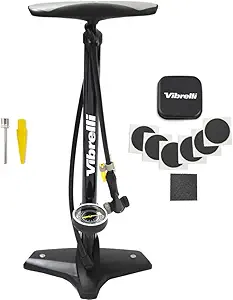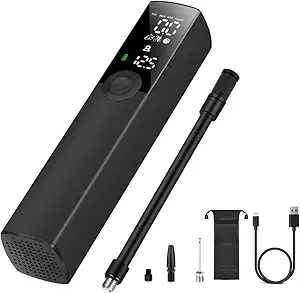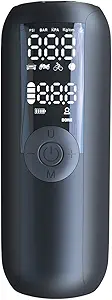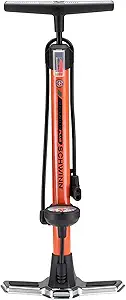The Ultimate Bike Pump Buying Guide: Types, Features, Prices, and Tips
Overview
A bike pump is an essential tool for any cyclist, allowing you to inflate your tires to the correct pressure for a smooth, safe ride. But with so many different types, features, and prices on the market, it can be overwhelming to choose the right one. In this guide, we'll walk you through the different types of bike pumps, key considerations to keep in mind when shopping, important features to look for, and tips to help you use and maintain your pump.
Types
1. Floor Pump: This is the most common type of bike pump, designed for use at home or in a workshop. They provide high volume and high-pressure inflation, making them ideal for road bikes and mountain bikes. They typically have a stable base, a long hose, and a large gauge for accurate pressure readings.
2. Hand Pump: These are smaller and more portable than floor pumps, making them a good choice for on-the-go inflation. They can be further divided into mini pumps and frame pumps. Mini pumps are small enough to fit in a pocket or saddlebag and are designed for emergency use. Frame pumps attach to the frame of your bike and are a bit larger, providing better inflation power.
3. CO2 Inflator: These use compressed CO2 cartridges to quickly inflate your tires, making them a popular choice for racing and time trials. They're lightweight and easy to use but can be more expensive in the long run.
Key Considerations
1. Valve Type: Make sure the pump you choose is compatible with your bike's valve type - either Presta or Schrader.
2. Inflation Power: Consider how much pressure and volume you need for your bike and riding style.
3. Portability: If you plan to take your pump on the go, choose a smaller, more portable option.
4. Durability: Look for a pump made with high-quality materials that will last through frequent use.
Features
1. Dual Head: Some pumps have a dual head that can be switched between Presta and Schrader valves, making them more versatile.
2. Gauge: A gauge allows you to see the pressure of your tires and ensure they're inflated to the correct level.
3. Hose: A long hose can make it easier to inflate your tires without having to move your bike around.
4. Compact Size: Some pumps are designed to be extra small and lightweight, making them easy to pack for long rides.
Prices
Bike pumps can range in price from under $10 for a basic hand pump to over $100 for a high-end floor pump with all the bells and whistles. Consider your budget and needs when shopping for a pump.
Tips
1. Check your tire pressure regularly to ensure a safe and smooth ride.
2. Keep your pump clean and well-maintained for optimal performance.
3. Practice using your pump before you need it in an emergency.
4. Consider carrying a spare tube and/or patch kit in case of a flat tire.
FAQs
Q: How do I know if my pump is compatible with my bike's valve type?
A: Look for information on the packaging or product description, or check with the manufacturer for compatibility information.
Q: How often should I check my tire pressure?
A: It's a good idea to check your tire pressure before every ride, or at least once a week if you ride frequently.
Q: What's the difference between a Presta and Schrader valve?
A: Presta valves are thinner and require a smaller hole in the rim, while Schrader valves are thicker and more commonly found on car tires. Make sure you choose a pump that's compatible with your valve type.














